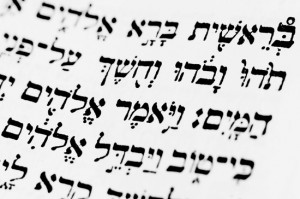 No one likes to be bored. We like exciting stories, which involves some level of conflict. Imagine a movie with no conflict. Everyone gets along. Everyone agrees. All sing Kumbaya together. Good for them, but boring cinema.
No one likes to be bored. We like exciting stories, which involves some level of conflict. Imagine a movie with no conflict. Everyone gets along. Everyone agrees. All sing Kumbaya together. Good for them, but boring cinema.
Someone like Dan Brown in The Da Vinci Code can make the formation of the canon seem like an exciting tale of deceit, intrigue, and conspiracy, but the reality is a whole lot more…well, boring. We’ll jazz it up a bit, so don’t stop reading.
The formation of the Old Testament canon is kind of boring at one level. The Council of Jamnia, an assembly of Jewish Rabbis, was long thought to have formally established the canon of Jewish scriptures (which became the Christian Old Testament) in 90 AD. This has been challenged in recent centuries. Some scholars assert the whole council is mythical and dismiss the narrative. But in one sense the story is even more ho-hum than the old Jamnia narrative.
The reality is that the Hebrew scriptures had a fixed canon long before 90 AD. Quoting Paul House, “the Pentateuch was the first section of Scripture to be canonized…by no later than 450 B.C…” and “The Prophets were all written by 400 B.C. and were deemed canonical no later than 200 B.C.” This leaves the third section, the Writings, which “it is probable…were canonical between 180 and 114 B.C., which means the entire canon was fixed by ca. 150 B.C. or sooner, not in A.D. 90 as many authors have claimed.”*
The Hebrew Canon was identical to our Protestant Bibles, only different. It was the same in that it included the same books, but it was different in that those same books were organized quite a bit differently. There were 24 books in the Hebrew Canon (our OT has 39), but they are the same books.
How can this be? Well, in the Hebrew canon a lot of our firsts and seconds are counted as one book. For instance, we have 1 & 2 Kings, but the Hebrew canon just had Kings. Likewise Samuel and Chronicles. Ezra and Nehemiah form one book as well. That explains 4 books, but what about the other 11 missing books? Well, all twelve of our “minor prophets” (Hosea, Joel, Amos, Obadiah, Jonah, Micah, Nahum, Habakkuk, Zephaniah, Haggai, Zechariah, Malachi) were counted as one book in the Hebrew scriptures: “The Book of the Twelve.”
The Order differs as well, beginning in a familiar way but ending very differently. Rather than ending with Malachi as our Old Testament does, the Hebrew canon ended with Chronicles. There is a remarkable confirmation from the mouth of our Lord Jesus that this is exactly the form of the canon that he recognized. Confronting his Jewish opponents, Jesus says, “And so upon you will come all the righteous blood that has been shed on earth, from the blood of righteous Abel to the blood of Zechariah son of Berekiah, whom you murdered between the temple and the altar. I tell you the truth, all this will come upon this generation” (Matthew 23:35-36). Abel died at the beginning of the biblical narrative (Genesis 4); Zechariah son of Berekiah was martyred at the very conclusion of the Hebrew canon (2 Chronicles 24:20). It would be like us saying “From A to Z,” “From beginning to end,” or, in reference to the Bible, “From Genesis to Revelation.” So, for Jesus the OT canon was fixed and included exactly the books that the OT of our bibles today include – no more and no less.
Who decided what books made the OT canon? We could say the community of the faithful determined it over the centuries under the guidance of the Holy Spirit (a good answer). Or, as Christians, we could say, “Jesus did.” That’s an even better answer.
*Foundations for Biblical Interpretation, David Dockery et al. editors, Broadman and Holman, 1994, pg. 154.